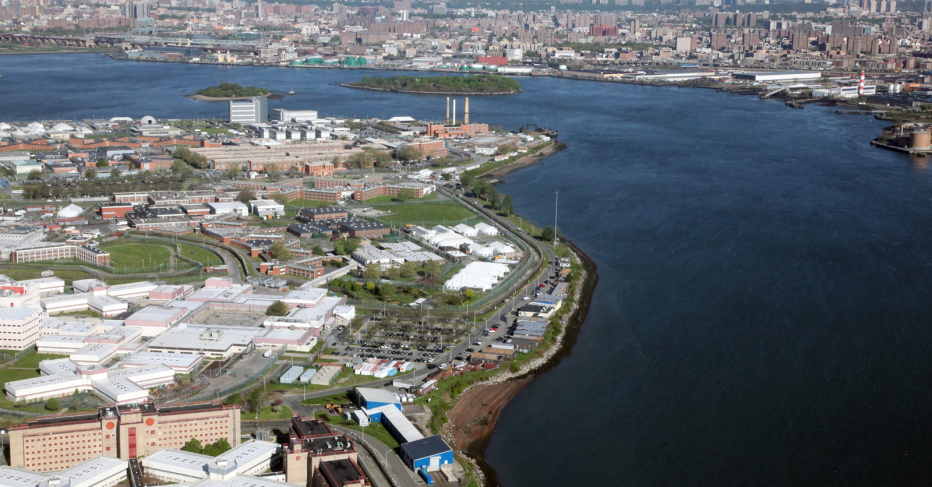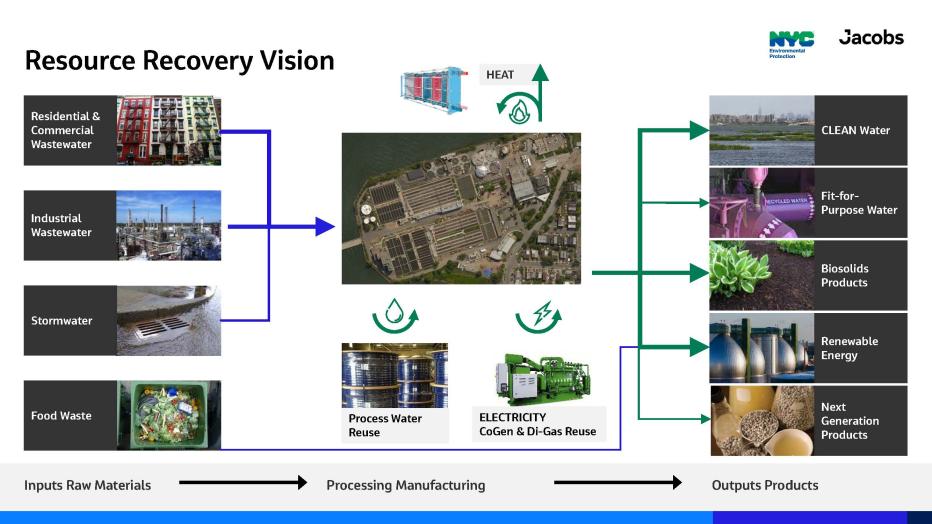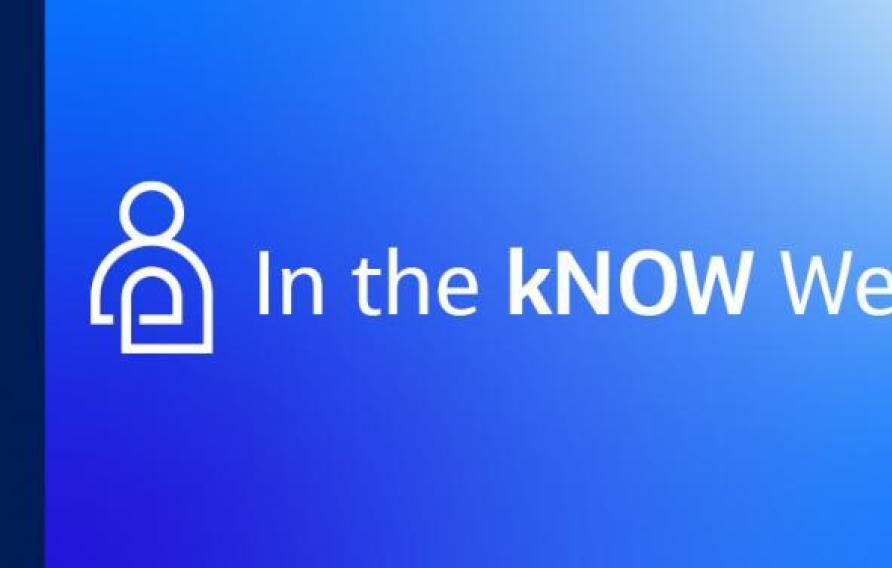
It’s one of the most valuable pieces of New York City real estate, with dramatic views across the East River. And now New York City (NYC) is studying whether Rikers Island — currently a jail complex — can be transformed into a wastewater resource recovery and renewable energy hub.
As part of the Renewable Rikers Act (2021), the NYC Department of Environmental Protection (DEP) has contracted with Jacobs to study the feasibility of consolidating four aging wastewater facilities into one, new wastewater resource recovery facility (WRRF) on Rikers island. Jacobs, along with many talented, local subconsultants, is assisting DEP to initiate a long-term program that could reimagine NYC’s wastewater infrastructure and community landscape.
What's the vision?

Closing the jail and turning Rikers Island into a state-of-the-art WRRF and energy hub could remove the need for the existing wastewater treatment facilities in the surrounding boroughs and provide major opportunities to realize some significant social justice and climate goals across the city.
The new facility could allow DEP to more easily incorporate innovative technology to maximize energy efficiency and beneficial use of the treatment waste products, like biogas and make strides toward fiscal and environmental sustainability. It’s also a means to tackle climate change, with a focus on reaching citywide goals for greenhouse gas reduction, carbon neutrality and energy efficiency, while also meeting the challenges of a steadily increasing population.
The Rikers Island redevelopment offers an opportunity for renewal, transformation and creating opportunities for equitable and inclusive economic development in several communities within NYC. Locating the new facility on Rikers Island will allow the existing four facilities to close, opening that waterfront property for possible community use. This project is far more than a wastewater plant — it’s an urban redevelopment and revitalization opportunity first, with a chance to achieve some significant social justice goals. These goals drove our strategy.
Sustainable development and OneWater core to project success
Jacobs’ OneWater approach to infrastructure planning reflects a broader trend as urban wastewater management considers three interrelated, people-focused realms — the engineering and urban planning realm (conveyance/treatment affecting people and the environment, going beyond traditional planning to consider enhancements to the urban landscape and surrounding communities, using digital tools such as automation, SCADA and Digital Twins); the economic realm (understanding the need to consider the circular economy); and the social equity and justice realm (working towards full and equal participation of all groups in a society, where resources distribution is equitable and all people are psychologically and physically safe and secure).
“Our approach for this study encompasses OneWater tenets, as well as a broader set of goals established by NYC’s OneNYC 2050 and the United Nations’ Sustainable Development Goals (SDGs) — the 17 pledges to overcome humanity’s greatest challenges by 2030 — as a lens through which to identify problems, plan and innovate in powerful new ways,” says Jacobs Global Water Director Susan Moisio. “Using this method, we are not only retooling infrastructure, but in doing so we are transforming lives and contributing towards a greater goal.”
As the largest combined water and wastewater utility in the U.S., New York is leading the way by studying the long-term redevelopment of Rikers Island and other NYC facilities.

Exploring urban revitalization
For many years, Jacobs has been exploring the evolving role of infrastructure, particularly in our cities and urban centers. From providing minimal urban infrastructure that meets basic human survival needs (such as running water and shelter) to improving economic growth and productivity, and ultimately targeting more advanced human needs to improve all aspects of quality of life and sustainability, our cities are being transformed.
In a 2021 Jacobs “In the kNOW” webinar, we explored the role of water infrastructure projects as catalysts for urban revitalization.
“This Rikers study is a transformational opportunity to drive social equity, redefine the city’s landscape and create a legacy for NYC residents – all while providing a blueprint for how future water infrastructure projects can serve as catalysts for urban revitalization,” adds Susan Moisio. “We can’t wait to begin.”
The challenge of funding
In the United States, the Infrastructure Investment and Jobs Act (IIJA) presents a massive opportunity to support transformative infrastructure by providing funding — more than $50 billion — to improve U.S. drinking water, wastewater and stormwater infrastructure — the single largest investment the water sector has seen in decades. In addition to nearly doubling the Drinking Water State Revolving Fund, the bill makes targeted investments to combat some of the toughest issues facing the industry, including water quality in disadvantaged communities, lead service-lines and emerging contaminants.
A recent Jacobs “In the kNOW” webinar outlines the primary programs to distribute the Federal stimulus dollars to water sector projects; how to access those funds; and the key attributes of projects that are successful in securing Federal funding support.
You might be interested in...
-
 Page
PageOneWater
Solving the world’s most complex water management challenges requires that we recognize how water connects us and affects us all. It requires different thinking — a OneWater approach — and that’s where we come in.
-
 Webinars
WebinarsLeveraging Water Infrastructure Projects as a Catalyst for Urban Revitalization
Cities are archetypal ‘systems of systems’ – everything connects to and impacts everything else. Elements of cities – infrastructure, services, open spaces, community activities, and more – cannot and should not be addressed in isolation. Historically, this mono-dimensional approach has been commonplace. Recognizing, devising, instituting, and operationalizing a comprehensive, integrated systems-based approach to strategy, planning, design, and development of water infrastructure is essential to the future of cities; and cities are fundamental to the global attempts to properly manage the water cycle and address climate change and social inequities. In this “In the kNOW” webinar, we will explore the role of water infrastructure projects as catalysts for urban revitalization, presenting a case for this transformative approach and sharing actual examples to highlight its successes to date, while defining remaining challenges.
-
 Solution
SolutionReplica
Replica is Jacobs' digital twin solution software platform, delivering intelligent solutions for our customers around the world for more than 20 years.
-
 Webinars
WebinarsShow Me the Money: Accessing Funding through Federal Programs
In this “In the kNOW” webinar, we will describe the primary programs that will be used to distribute the Federal stimulus dollars to water sector projects; how to access those funds; and the key attributes of projects that are successful in securing Federal funding support. We will also share the benefits you can achieve by taking advantage of these new programs, along with information about important previously existing Federal funding sources, such as the low-interest loans with flexible financing provided through the Water Infrastructure Finance and Innovation Act (WIFIA) program, now in its fifth year. You will hear insights and successful case examples from Jacobs staff who have helped clients secure Federal and State financing for billions of dollars in water infrastructure capital projects, and from one of the senior underwriters in EPA’s WIFIA loan program.












































